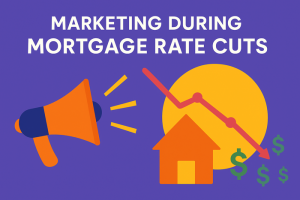Summary
This article covers SEO strategies to boost mortgage businesses. Learn about the key benefits of optimizing your website, using high-quality content, and improving your search engine rankings. By the end, you’ll know how to leverage SEO to increase organic traffic and attract more leads.
As a mortgage broker, one of your most important responsibilities is to consistently generate leads for your loan officers. Once you have identified and made connections with quality leads, your talented team can close a good percentage of deals by providing excellent customer service and a streamlined experience.
But getting these leads in the first place can be quite challenging, especially if your site is not drawing in enough traffic.
If you find yourself facing this issue, it is time to reevaluate your search engine optimization (SEO) tactics. SEO refers to the process of making your site more appealing to search engine algorithms, like the ones used by Google.
If your site is SEO-friendly, it will rank higher, which means that users can easily find your content.
With this in mind, below, we have outlined seven proven SEO strategies that you can begin using right away to increase search traffic.

1. Assess Your Site’s Performance
Your first step should be to assess your current site performance. Find out what areas you are struggling in so that you can better understand how to improve your content. Google Analytics is a free tool that you can use to review key metrics about search traffic.
2. Optimize Your Content
After you have reviewed the analytics data, start navigating through your site page by page. Read through your existing content to make sure that it is digestible. It should also incorporate relevant keywords. Lastly, verify the word count. Most blog and landing page content should be between 700 and 1,000 words.
You should also make sure that your meta title and meta descriptions include target keywords for that page. Once you have made the necessary updates, it is time to move on to the next step!
3. Enhance the UX
Google’s algorithms no longer focus on written content and keywords alone. They also assess page performance and load speed, as well as a variety of other factors.
To ensure that your site ranks highly and draws in more traffic, you need to enhance the user experience (UX). Talk to your in-house IT team or consider partnering with a digital marketing agency that offers these services.
4. Optimize for Mobile
When was the last time you or one of your loan officers tried to access your site from a mobile device? What was the experience like? Was it user-friendly or tedious and unenjoyable?
If your site is not optimized for mobile access, then you might be missing out on a ton of potential business for your mortgage brokerage. Many consumers access the internet primarily from their smartphones, so you need to make sure that your content is in line with this trend.
5. Incorporate Long Tail Keywords

Long-tail keywords are phrases that are between four and seven words long. These phrases are usually less competitive on search engines. Identify some long-tail keywords that are relevant to your services and strategically work them into your blogs, landing pages, and other kinds of content.
6. Throw in Long-Form Content Occasionally
While most of your content should be around 700 to 1,000 words, you can occasionally publish long-form articles. These articles should act as “pillar pieces” that reference and link to your shorter blogs. A few examples include an extensive home-buying guide or a breakdown of different types of mortgages.
7. Utilize a Top CRM with Automation Tools
Putting in the effort to make your site SEO-friendly is useless if no one sees your new content. That is why we recommend advertising your blogs and written materials on social media platforms and other channels.
Time is at a premium for mortgage brokers. That’s why you should use automated marketing software to make the most of your advertising efforts.
At BNTouch, we offer a comprehensive CRM platform that is perfect for mortgage brokers, large firms, and multi-location enterprises. Our software includes automated marketing tools, lead distribution, and resources to help you stay connected with your clients.
Key Takeaways
- Importance of SEO for Visibility:
SEO strategies are essential to boost online presence and attract potential clients to your mortgage business.
- Keyword Optimization:
Effective keyword optimization is crucial for improving search engine rankings and driving targeted traffic.
- Local SEO for Targeted Reach:
Focusing on local SEO helps mortgage businesses reach clients in specific geographic areas.
- Mobile-Friendliness for Better Rankings:
A mobile-optimized, fast-loading website enhances both user experience and SEO performance.
Commonly Asked Questions
- How can mortgage businesses improve their SEO content strategy to boost organic traffic and client acquisition?
To improve your mortgage business’s SEO content strategy, focus on creating valuable, informative content that answers your audience’s specific questions. Use targeted keywords, optimize your website’s technical aspects, and regularly update your blog with relevant insights. Engaging content that solves problems and showcases your expertise can help attract more organic traffic and boost client acquisition over time.
- How can mortgage businesses improve organic search engine rankings to attract more clients?
In order to enhance organic search engine rankings, mortgage businesses should focus on ensuring their website is technically sound. Regular updates to blogs, local SEO strategies, and a mobile-friendly site can enhance visibility. Building backlinks and engaging in content marketing are also key strategies.
- How can mortgage businesses optimize their websites for better performance and user experience?
Website optimization for mortgage businesses includes improving page load speed, mobile responsiveness, and user-friendly navigation. Incorporating relevant keywords, enhancing content quality, and ensuring SEO best practices can also increase organic traffic and search engine rankings. Regularly updating content and monitoring analytics is crucial for ongoing improvement.





